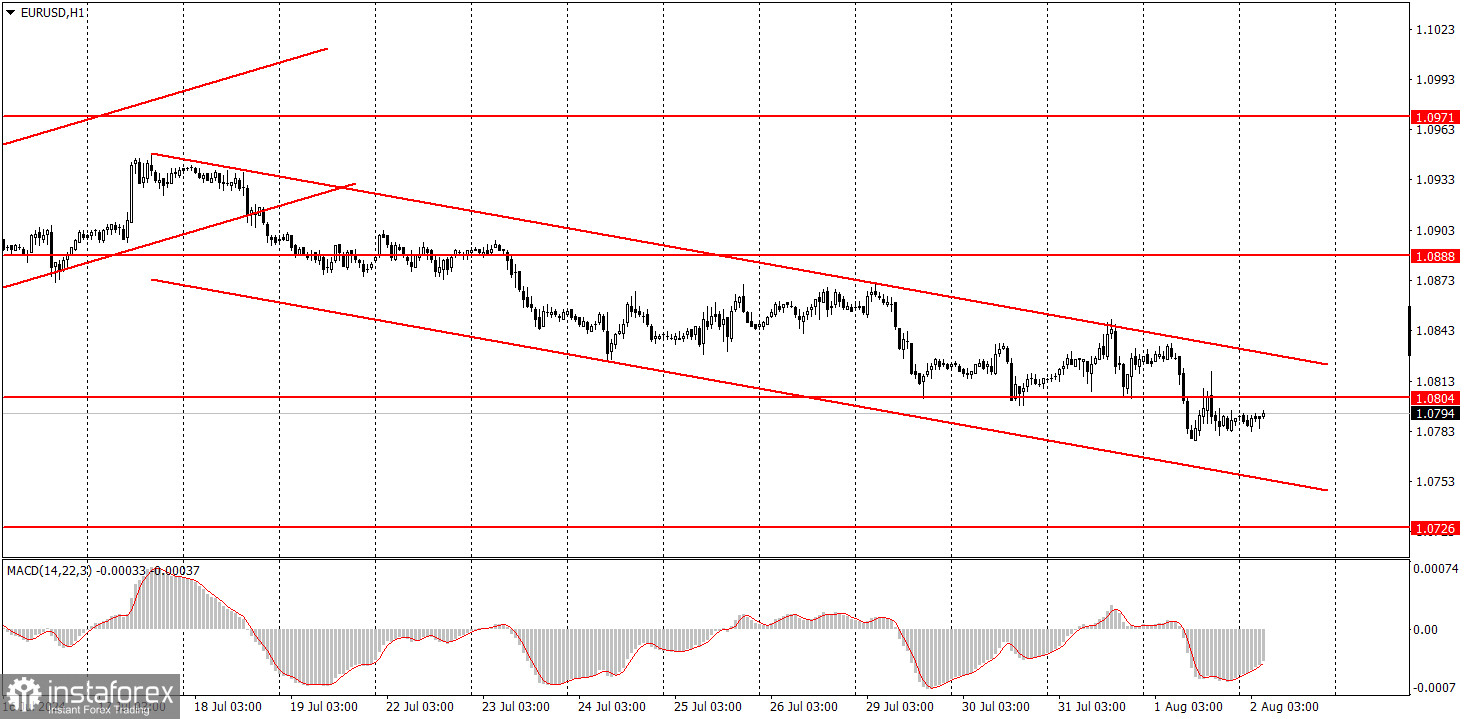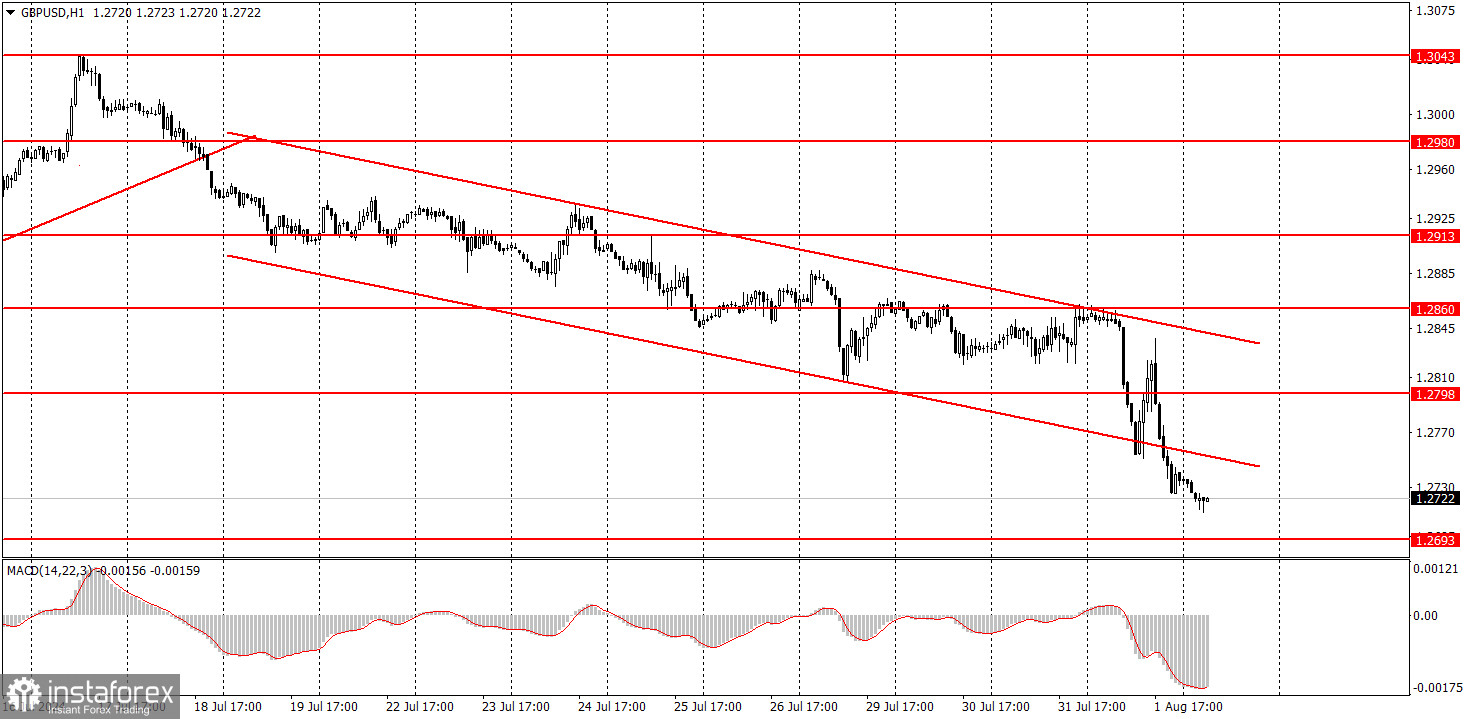Analysis of macroeconomic reports:

A few macroeconomic events are planned for Friday, but all are significant. There will be no important data in the Eurozone, Germany, and the UK. However, in the U.S., at least two reports are set to be released that could significantly impact the movement of both currency pairs. These reports are on non-farm payrolls and the unemployment rate. Recall that these reports have only exerted pressure on the dollar over the past three months. However, the market was bullish then, and the situation has changed. The European Central Bank and the Bank of England have begun to ease monetary policy, a background factor for strengthening the U.S. dollar. The conclusion: if U.S. data disappoints the market today, it will be only a matter of a bullish correction. If U.S. reports finally meet the forecasts, both pairs could continue to fall.
Analysis of fundamental events:

Among the fundamental events for Friday, the speech by the Bank of England's Chief Economist Huw Pill stands out. It could be quite interesting, but the market is currently focused on the Bank of England's first rate cut. Thus, Pill's speech will be overshadowed by this event, as well as by the U.S. labor market and unemployment reports.
General conclusions:
Today, the U.S. dollar could continue to rise. If the U.S. labor market and unemployment data finally please experts, both pairs could fall even further. These two reports are the pivotal events of the day. We anticipate the dollar will continue its upward trajectory over the next two weeks.
Basic rules of a trading system:
1) The strength of a signal is determined by the time it took for the signal to form (bounce or level breakthrough). The shorter the time required, the stronger the signal.
2) If two or more trades around a certain level are initiated based on false signals, subsequent signals from that level should be ignored.
3) In a flat market, any currency pair can produce multiple false signals or none at all. In any case, it's better to stop trading at the first signs of a flat market.
4) Trades should be opened between the start of the European session and mid-way through the U.S. session. All trades must be closed manually after this period.
5) In the hourly time frame, trades based on MACD signals are only advisable amidst substantial volatility and an established trend, confirmed either by a trendline or trend channel.
6) If two levels are too close to each other (from 5 to 20 pips), they should be considered as a support or resistance zone.
7) After moving 15 pips in the intended direction, the Stop Loss should be set to break-even.
What the charts show:
Support and Resistance price levels can serve as targets when buying or selling. You can place Take Profit levels near them.
Red lines represent channels or trend lines that depict the current trend and indicate the preferred trading direction.
The MACD (14,22,3) indicator, encompassing both the histogram and signal line, acts as an auxiliary tool and can also be used as a source of signals.
Important speeches and reports (always noted in the news calendar) can profoundly influence the price dynamics. Hence, trading during their release calls for heightened caution. It may be reasonable to exit the market to prevent abrupt price reversals against the prevailing trend.
Beginners should always remember that not every trade will yield profit. Establishing a clear strategy, coupled with effective money management, is key to long-term success in trading.
 English
English 
 Русский
Русский Bahasa Indonesia
Bahasa Indonesia Bahasa Malay
Bahasa Malay ไทย
ไทย Español
Español Deutsch
Deutsch Български
Български Français
Français Tiếng Việt
Tiếng Việt 中文
中文 বাংলা
বাংলা हिन्दी
हिन्दी Čeština
Čeština Українська
Українська Română
Română

